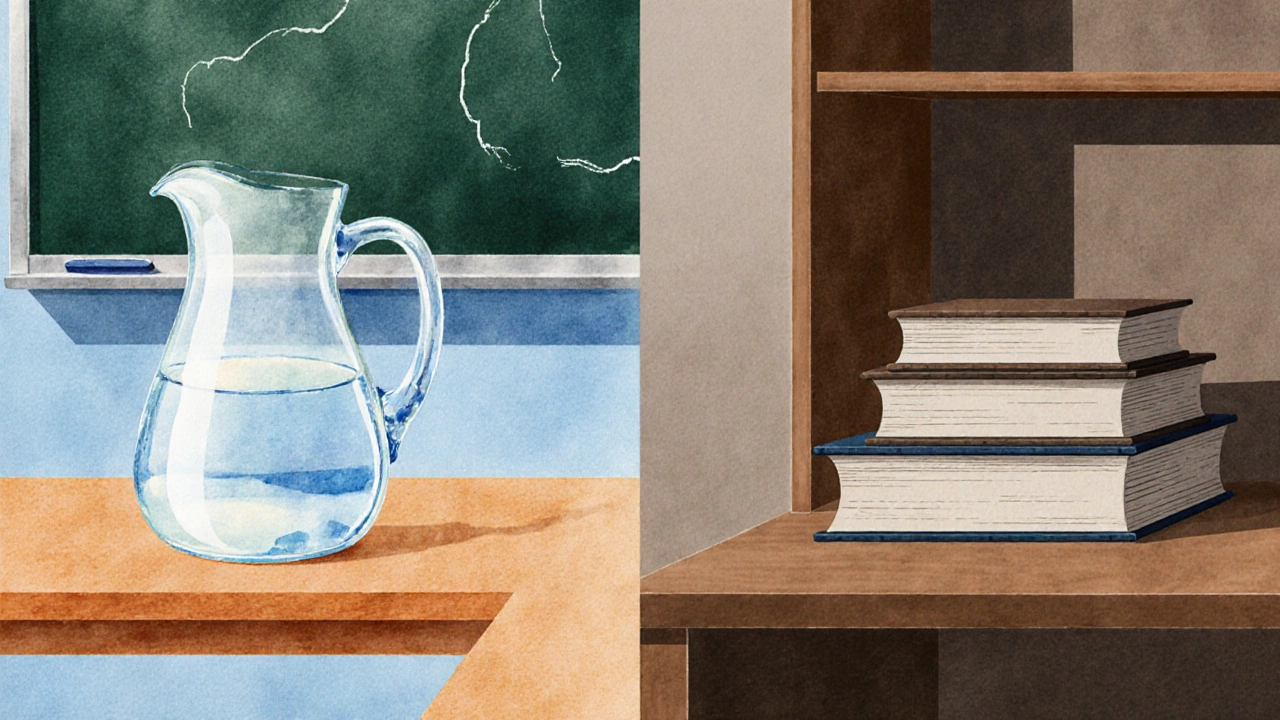Shelving Grammar Checker
- As a mass noun, "shelving" uses singular verbs: "shelving is"
- Use "shelf" or "shelves" for individual pieces
- When "shelving" is a gerund, it follows verb agreement rules
- "Shelving" is not typically used as a plural noun
Quick Takeaways
- “Shelving” is normally an uncountable (mass) noun, so it takes singular verb forms.
- When you’re talking about individual pieces, use “shelf” (singular) or “shelves” (plural).
- In most modern writing, "shelving is" is preferred; "shelving are" sounds odd unless you treat it as a collective of separate units.
- Keep an eye on context: as a verb, "shelving" follows regular verb rules (e.g., "they are shelving the books").
- Use the checklist below to avoid common mistakes.
Shelving is a noun that refers to the system of shelves or the material used to create a shelf‑like surface (often seen in offices, libraries, and homes). It can also serve as a gerund-the -ing form of the verb shelve-but we’ll focus on the noun use because that’s where the singular vs. plural question originates.
Grammar Basics: Countable vs. Uncountable Nouns
English splits nouns into two big buckets:
- Countable nouns-you can add a number before them (one book, two books). They have clear singular and plural forms.
- Uncountable (mass) nouns-you can’t usually count them directly (water, information, furniture). They stay singular in verb agreement.
Where does “shelving” fit? Most dictionaries list it as a mass noun. That means it behaves like “furniture” or “equipment”: you say “the shelving is sturdy,” not “the shelving are sturdy.”
Is “Shelving” Countable? How Dictionaries Classify It
Both the Oxford English Dictionary and Cambridge Dictionary label “shelving” as an uncountable noun when used to refer to a system of shelves. The entry reads:
"shelving - the material or structure used for storing items, typically in a series of horizontal surfaces".
Notice the lack of a plural form in the definition. If you ever need to be precise, you can check the entry for the verb form “to shelve,” which clearly states the gerund usage: “shelving books” (action).

Verb Agreement: When to Use “Is” vs. “Are”
Because “shelving” is a mass noun, the verb that follows should be singular. Here are the two most common patterns:
- Correct: shelving is installed along the hallway.
- Incorrect: shelving are installed along the hallway.
The second sentence sounds awkward to native speakers because it forces a plural verb onto an uncountable noun. The only time you might hear “shelving are” is when a writer treats each individual shelf as a separate entity, essentially re‑phrasing the subject to “the shelves.” In that case, it’s better to say “the shelves are …”.
Examples in Real‑World Sentences
Below are everyday examples that show the correct usage of “shelving” and its related words.
| Sentence | Verb Form | Why It Works |
|---|---|---|
| The new aluminum shelving system is already assembled. | is | “Shelving” is treated as a mass noun → singular verb. |
| Our office’s shelving are painted white. | are (incorrect) | Should be singular because “shelving” isn’t countable. |
| The shelves on the wall are full of books. | are | “Shelves” is a plural countable noun → plural verb. |
| We are currently shelving the new inventory. | are (verb “to shelve”) | Here “shelving” is a gerund, acting as a verb, so “are” matches the subject “we”. |
Related Terms: “Shelf”, “Shelves”, and “Shelving Unit”
Understanding the difference between “shelf”, “shelves”, and “shelving” helps avoid confusion.
- Shelf is a single, flat surface used for storing items - countable. You can say “a shelf”, “two shelves”.
- Shelves is the plural of shelf - takes plural verbs (e.g., “the shelves are dusty”).
- Shelving unit refers to a complete piece of furniture made up of multiple shelves - countable (“a shelving unit”, “three shelving units”).
When you need a plural verb, it’s often clearer to switch from “shelving” to one of these countable nouns.

Common Pitfalls and Quick Tips
Even seasoned writers slip up. Here’s a short checklist you can run through before hitting publish:
- Is the word referring to the whole system (mass noun) or to individual pieces?
- If it’s the system, use singular verbs: shelving is, not "are".
- If you’re counting the pieces, replace “shelving” with “shelf/shelves” or “shelving unit(s)”.
- When “shelving” appears after a subject like “the new shelves”, double‑check that the verb matches the subject, not the word “shelving”.
- Remember the gerund case: if “shelving” follows a subject pronoun, treat it as a verb (e.g., “they are shelving the books”).
Mini‑FAQ: Quick Answers to the Most Common Questions
Is “shelving” ever used as a plural noun?
Normally no. When writers want a plural sense, they switch to “shelves” or “shelving units”. Using “shelving are” sounds unidiomatic.
Can I say “The shelving were expensive”?
It’s grammatically awkward. Better to say “The shelving was expensive” or “The shelves were expensive”.
When does “shelving” act as a verb?
When it follows a subject and expresses the action of putting something on a shelf, e.g., “They are shelving the new arrivals”. In that case, it follows normal verb agreement rules.
Is there a difference between “shelf” and “shelving” in British English?
No major difference. Both dialects treat “shelving” as a mass noun. The confusion usually comes from mixing singular and plural forms rather than regional variation.
How do I write a sentence about installing a new shelving system?
Use a singular verb: “The new shelving system is installed in the study.” If you prefer to emphasize each piece, say “The new shelves are installed in the study.”
Bottom Line
When you see the word “shelving,” think of it as a mass noun. Pair it with singular verbs, and you’ll sound natural. If you need a plural sense, reach for “shelf”, “shelves”, or “shelving units” instead. Remember the quick checklist, and you’ll avoid the most common slip‑ups.

